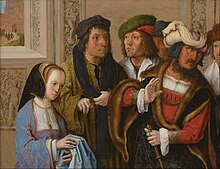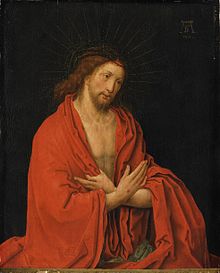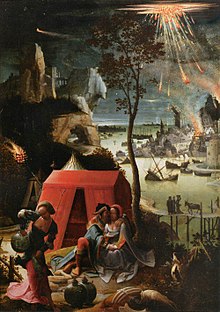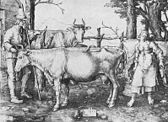
Quick Facts

Biography
Lucas van Leyden (1494 – 8 August 1533), also named either Lucas Hugensz or Lucas Jacobsz, was a Dutch engraver and painter. Lucas van Leyden was among the first Dutch exponents of genre painting and is generally regarded as a very accomplished engraver.
Biography


Lucas was the son of Huygh Jacobsz. He was born, died, and was mainly active in Leiden.
Carel van Mander characterizes Lucas as a tireless artist, who as a child annoyed his mother by working long hours after nightfall, which she forbid not only for the cost of candlelight, but also because she felt that too much study was bad for his sensibilities. According to Van Mander, as a boy he only consorted with other young artists, such as painters, glass-etchers and goldsmiths, and was paid by the Heer van Lochorst (Johan van Lockhorst of Leiden, who died in 1510) a golden florin for each of his years at age 12 for a watercolor of St. Hubert.
Paintings


He learned basic techniques from his father and from Cornelis Engelbrechtsz, but his precocious originality was paramount. Where he learnt engraving is unknown, but he took advantage of the works of Marcantonio Raimondi, whose motifs are reworked in Lucas' engravings and paintings, and became highly skilled in that art at a very early age: the earliest known print by him (Mohammed and the Murdered Monk) dates from 1508, when he was perhaps only 14, yet reveals no trace of immaturity in inspiration or technique.
Seventeen paintings surely by Lucas survive, and a further twenty-seven are known from descriptions by Carel van Mander, from contemporary copies or from drawings of them made by Jan de Bisschop in the later 17th century. Max Friedländer descried no clear pattern of stylistic development, in large part because Lucas' oeuvre was swelled and obscured by attributions since found unsustainable.
Four broad stages in his artistic development are characterized by Elise Lawton Smith as his early half-length figures (c 1506-1512), the development of his landscapes (c 1512-1520), the influence of Antwerp paintings (c 1521-25) and the late works (ca 1525-1531), where multiple figures are deployed against wooded landscapes, as in the Healing of blind man of Jericho (illustration).
- Lucas van Leyden's works -paintings

Saint Paul, attr. Leyden

Bearing of the Cross with Veronica, 1520s

The Temptation of St Anthony

Card Players

The Last Judgement
- Engravings

The Milkmaid, engraving, 1510

Joseph Explains Pharaoh's Dream, engraving, 1512

Resting Pilgrims








